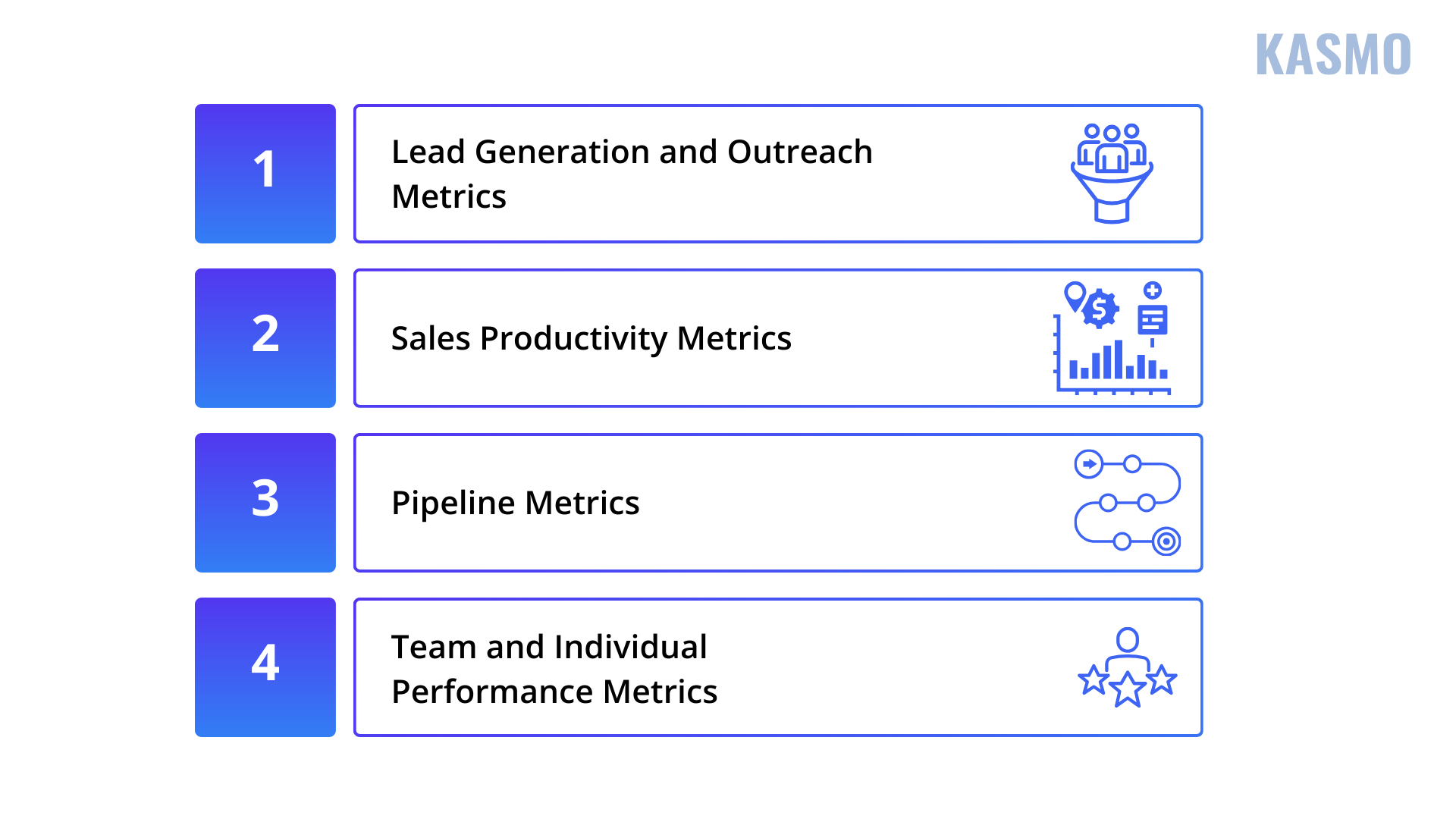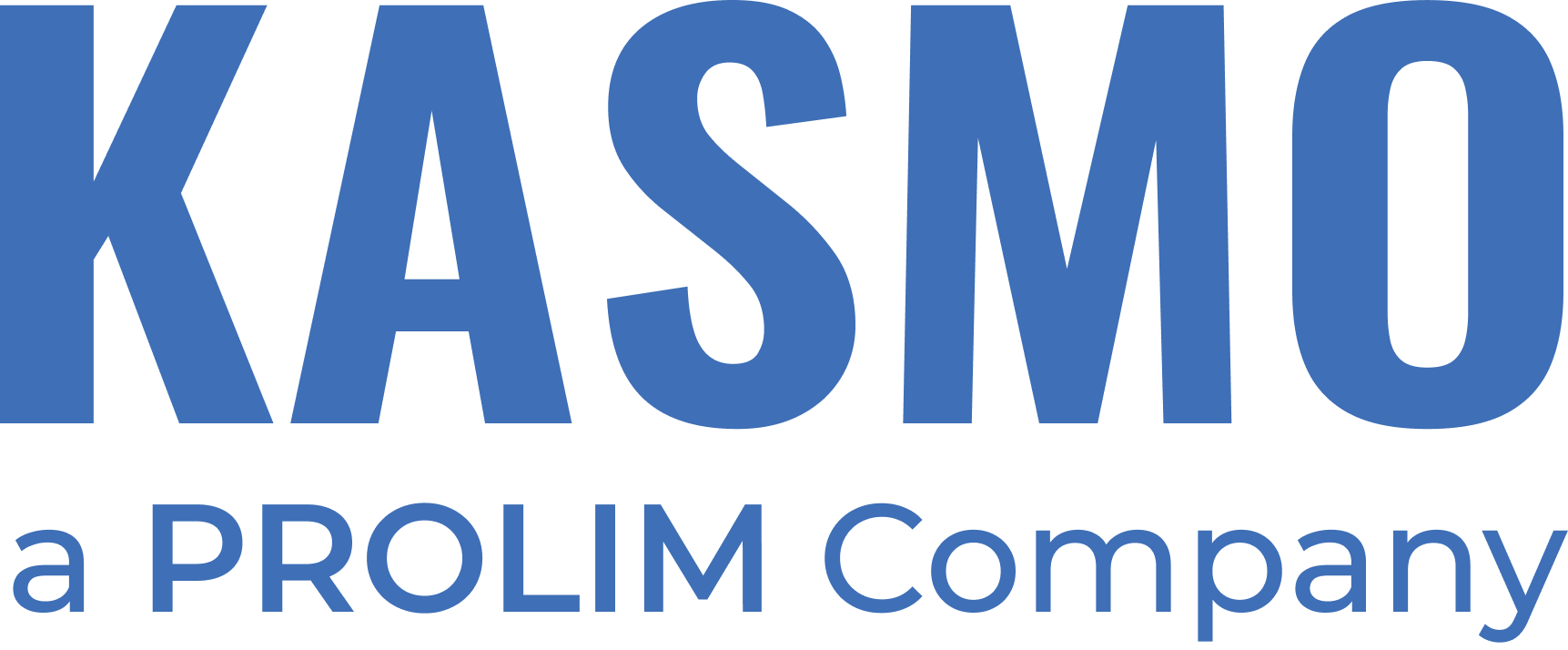What is Sales Performance?
The procedure through which the sales team measures the success of converting leads into successful opportunities is defined as sales performance. This metric is a critical indicator of how your business is performing in comparison to your competitors. Reflecting both the effectiveness of your sales strategies and the productivity of your team helps you identify and strategize ways you can enhance your revenue generation.
There are several factors that influence sales performance, such as – market competition, product or service quality, and shifting consumer expectations. Recognizing how these factors impact sales is the first step in enhancing your team’s effectiveness and achieving sustainable growth. These factors which help you understand the quality of work contributed by your sales team are also known as sales performance metrics.
Difference between Sales Performance Metrics and Sales KPIs
Both sales performance metrics and sales KPIs might sound similar, but they are different from each other. Let’s look at this table to understand how:

Importance of Sales Performance Metrics
Sales performance metrics reveal how effectively an organization or individual is meeting established goals. These metrics provide valuable insights into understanding if targets are realistic and can be achieved. It also highlights areas for improvement, increasing the likelihood of achieving those goals.
These metrices provide data-driven insights that help leaders optimize sales performance management. They play a key role in decision-making, driving efficiency, growth, and process optimization. Additionally, they help clarify business expectations, boosting both performance and employee engagement, and fostering a more motivated and results-driven sales team.
What are the Different Types of Metrics Businesses Can Track to Measure Sales Performance?
Here are some of the metrics you can track that can help you establish a solid foundation for solid sales performance metrics:
Revenue Metrics
This helps businesses understand their financial health and is an integral part of measuring their sales performance. Here’s how it is measured:
- Total Revenue: This metric shows the overall income generated from all sales activities, helping businesses assess their financial health. It also reflects how effectively you are taking your sales efforts across all products or services.
- Year-Over-Year (YoY) Growth: This metric compares current revenue against the previous year to gauge overall growth and success in meeting long-term targets.
Customer Acquisition Metrics
Evaluating sales performance is not only how quickly your sales team is closing deals, but also about measuring how well the brand is being accepted by consumers. Acquiring new customers is much more difficult when compared to retaining customers. You need to build a rapport with the new customers and only then can you convert them into opportunities.
- Percentage of Revenue from New Business: This metric measures how much revenue is generated from new customers. It helps businesses identify growth and success they had in acquiring new customers.
- Customer Acquisition Cost (CAC): This sales performance metrics is measured by understanding the total cost involved in acquiring a new customer. This evaluation helps businesses assess the efficiency of their marketing and sales strategies and teams.
- Market Penetration: It provides insight into your business’s market share and growth potential by measuring the proportion of your customer base relative to the total market.
Conversion Metrics
This metric helps you successfully measure the performance of your sales teams and individual sales reps. Through this metric you can understand how well the sales strategies are working. If there’s a long delay in closing sales deals, it will indicate that you probably need new sales strategies to achieve your target.
- Conversion Rate: This is one of the important factors that helps businesses measure their sales performance. This evaluation facilitates businesses to track the percentage of leads that get converted into customers. A high conversion rate indicates the effectiveness of sales strategies and lead qualification.
- Win Rate: This metric is especially useful for individual sales reps and sales managers that can help them track their team performance. This sales performance metric shows the difference between won and lost opportunities. It offers businesses insight into the effectiveness of sales techniques and the team’s ability to close deals.
- Average Length of Sales Cycle: This helps businesses measure the time taken for a lead to become a client. This metric helps sales leaders understand and measure the performance of their sales reps. If a sales professional is taking less time to convert a lead into client and close sales deals easily, sales leaders can understand the methods they are taking to reach their targets.
Customer Retention Metrics
Retaining your old customers and building brand loyalty can be quite challenging. Maintaining a similar type of service when you first acquire a customer can prove to be difficult if you do not consider customers’ needs and demands. Understanding customer behavior and then drawing insights from them can help you retain customers and prevent customer churn.
- Percentage of Revenue from Existing Customers: This metric highlights how much income is generated from repeat customers. With this evaluation, businesses can understand how to cultivate good retention strategies and cross-selling efforts.
- Customer Lifetime Value (CLV): This shows the total revenue a business can expect to make from a customer throughout their association with the brand. Tracking CLV helps businesses focus on long-term relationships and strategic retention efforts.
- Net Promoter Score (NPS): A key factor for businesses to consider while overviewing the sales performance metrics. Through this metric, businesses can measure customer satisfaction and loyalty. It is generally conducted by asking how likely customers are to recommend your business to others. A higher NPS indicates strong customer relationships and high potential for referrals.
Sales Efficiency Metrics
A crucial factor for businesses measuring sales performance metrics. This helps sales and business leaders identify if their expenses are exceeding their profits and vice versa.
- Cost of Selling: Compares the expenses incurred during the sales process against the revenue generated. A lower ratio indicates efficient use of resources and effective sales strategies; however, a higher ratio indicates the resources are not being fully utilized. This pulls the attention of businesses, and they need to identify ways they can mitigate the gap.
- Sales Activity Metrics: Tracks daily activities, such as calls, emails, meetings, and proposals. Monitoring these metrics helps identify which activities drive the most results and areas where sales teams can improve.
- Weighted Value of Pipeline: Assesses the probability of deals closing based on their position in the sales funnel, providing a more accurate forecast of potential revenue to businesses.
Here are some more metrics businesses can utilize to measure their sales performance:

Here’s a Checklist to Improve the Performance of Your Sales Team
Check if Your Team Trusts You
Sales leaders – ask this question to yourself – if your team is underperforming. Not only in sales but also in general business operations, trust is a fundamental factor for any business success. If your team doesn’t trust you, they’ll resist your leadership and are less likely to come to you for any suggestion, even if they are struggling to achieve their targets. Building trust takes time but is crucial for strong performance.
Introspect on How You Respond to Failures
Setbacks are common in any business. Especially in sales, there might be times where you cannot close deals successfully through no fault of your own. However, introspecting how you respond to setbacks will help your team follow through difficult times. If you react with frustration or defensiveness, it will hinder your team’s ability to regroup and move forward. On the contrary, if you are leading with empathy your team can focus on learning from failure, reset and refocus.
Your Team is Your Strength
In sales, having a strong team helps you achieve even the most difficult of targets. Achieving targets as a team becomes easier than achieving targets alone. As mentioned before, like the way your team needs to trust you, you need to have trust in the capabilities of your team. A lack of trust leads to micromanaging, preventing your team from building ideas and bringing forth any creativity.
Create S.M.A.R.T Goals for Your Team
Ensure your sales goals are Specific, Measurable, Achievable, Relevant, and Time-bound. Clear, attainable goals motivate teams and ensure they’re aligned with company objectives. By frequently reviewing and adjusting goals you can avoid demotivation in your team.
Motivate with Incentives
Sales incentives should be motivating. Get input from your team on what incentives they value most, whether monetary or non-monetary. This ensures your team remains motivated and a healthy competitive environment pushes them to achieve their targets.
Create a Purpose
Do not force your sales team to close deals or approach clients, just to achieve those numbers! Establishing a shared mission within your sales team can increase motivation and collaboration. Make sure your team understands how their goals fit into the company’s broader vision. Create a culture of unity through team goals, shared rewards, and regular communication.
Foster a Positive and Transparent Work Culture
Transparency builds trust and improves performance. Share performance data, strategies, and both wins and losses with your team. This approach helps your reps make informed decisions and learn from each other, fostering an open, collaborative work environment.
Take Data-Driven Decisions
Making decisions based on data increases credibility and minimizes guesswork. Share the data behind your decisions with your team to provide clarity, remove assumptions, and improve trust in your leadership.
Build Strong Liaison with Other Departments
You need to build a strong liaison with other departments. Co-ordinating with departments like marketing, customer support, and finance—is critical for seamless operations. Foster collaboration by encouraging idea-sharing, maintaining a positive attitude, and helping other teams when needed.
Help Your Employees Track Their Own Progress
Sales reps should be able to easily track their performance against goals. Make sure they have access to up-to-date dashboards and reports so they can manage their progress and stay motivated. Simplifying reporting increases efficiency and allows reps to focus more on selling.
Conclusion
Sales performance metrics are essential tools for measuring and improving the effectiveness of your sales team. By tracking key metrics like revenue, conversion rates, customer acquisition costs, and sales efficiency, businesses can gain valuable insights into their sales processes, identify areas of improvement, and adjust strategies to achieve their goals. With accurate and relevant data, sales managers can optimize their sales performance management, drive better decision-making, and foster a more motivated and results-driven team.
To further enhance sales performance, it’s crucial to focus on continuous improvement. Implementing best practices such as setting clear, measurable goals, providing appropriate incentives, and fostering a culture of trust and transparency will empower your sales team to perform at their best. By combining data-driven insights with effective leadership, businesses can optimize their sales strategies, accelerate growth, and build stronger customer relationships.
With Kasmo’s expertise businesses can improve the sales efficiency of their team with Salesforce Agentforce. Read this blog here and understand how implementing the AI Agents for Sales can help you optimize your sales processes.



